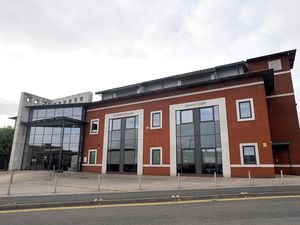Civic leaders sorry to see Clive Barracks go
Civic leaders in north Shropshire have spoken of their sadness at news of the planned closure of the Army barracks at Tern Hill – and said they would not let it go without a fight.
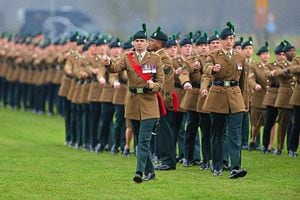
Clive Barracks at Tern Hill, near Market Drayton,
.
A new base will need to be found for The 1st Battalion The Royal Irish Regiment.
Hundreds of soldiers from the regiment recently celebrated St Patrick's Day with an annual parade.
The mayor of Market Drayton, Councillor Roy Aldcroft, said it was not too late to launch a campaign to save the site and said he would be speaking to the town council, Shropshire Council and the Ministry of Defence.
But North Shropshire MP Owen Paterson, despite pledging to raise the matter at Whitehall, said it would be wrong to get people's hopes up.
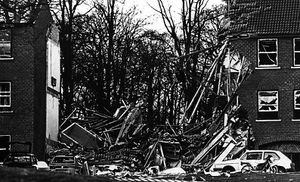
Bombed by the Luftwaffe. Bombed by the IRA. Closed by the Ministry of Defence.
The decision to shut Clive Barracks at Tern Hill will draw down the curtain on 100 years of Shropshire history.
The site has military roots going back to 1916, when an airfield was established at Tern Hill in the days of biplanes and the Royal Flying Corps, making it one of Britain's oldest air bases and pre-dating the Royal Air Force itself.
Training was on aircraft ranging from Avro 504Ks to Sopwith Camels and Handley Page bombers.
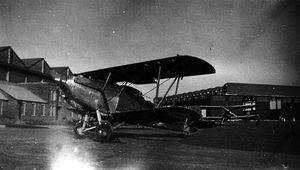
RAF Tern Hill closed down in 1920. Two hangars were used as stabling and a third for the indoor schooling of horses.
Then, as storm clouds gathered in the 1930s, the decision was taken to revive the site. Many of the structures that are familiar today are from that period.
Although most people will remember it as a training base, Tern Hill can point to the Battle of Britain and the Blitz among its battle honours during the war. During much of 1940 and 1941 its marauding Spitfires, Hurricanes and Blenheim nightfighters hunted down Luftwaffe intruders.
Tern Hill suffered too. On the morning of October 16, 1940, a lone raider dropped a string of bombs and strafed the airfield.
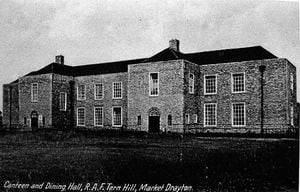
Post-war the training role continued, later with helicopters, until 1976 when the RAF Central Helicopter Flying School was transferred to nearby RAF Shawbury.
Over the years Clive Barracks has been home to a number of different units, perhaps most famously the Parachute Regiment which was the target of an IRA bomb attack in February 1989.
The terrorists' bombs planted in the dead of night ripped apart accommodation blocks, but luckily they had been spotted in the act by sentries, and the blocks were evacuated in time, avoiding a bloodbath.
The MP said he knew there were problems with the quality of accommodation for soldiers at Tern Hill but still expressed his surprise at the decision.
"I thought we had seen it off, actually," Mr Paterson said.
"There are problems there with damp, and there has not been much money spent.
"But we had got extra money being put into accommodation to bring it up to standard so I was very surprised this had happened.
There has to be consolidation of defence of state, and if the housing is not up to standard and there is better elsewhere there is not a lot we can do. I just think for our area it is a real shame."
He added: "We have very much welcomed the Army – they have made a tremendous contribution and it is a very sad day. I think Drayton has always been proud to host the Army base nearby.
"Recently we have been very lucky with the Royal Irish who have really made their mark locally, they are really popular.
"Things like Remembrance Day are tremendous now in Drayton, they have got a very active British Legion.
"But the Royal Irish really pile in, whenever there is a charity event or they are asked to go along they do.
"I will be speaking to the minister but I wouldn't want to raise hopes artificially that we are going to get a great campaign going and do it.
Mr Paterson said the announcement was not all doom and gloom, however.
"Obviously we will lack the turnover in the pubs and the shops of the Army population going into town. But without being too negative they are going to build 600 homes, that will bring in new families, new young people for the schools."
Councillor Aldcroft made the call for a campaign after claiming the regiment going was akin to "losing kindred spirits".
"They have become part of our family here, and I'm sure it feels like some of us are family to them," he said.
George Bratton, of the Market Drayton branch of the Royal British Legion, said: "It will be very sad to see them go.
"We have always had a very good rapport with the Royal Irish since they first came to Tern Hill. When they were out in Iraq my wife and others put on parties to entertain the wives and children.
"On Armed Forces Day they would always come down and support the town. They used to come down by the bus load.
"We would also hold competitions with them which was good fun. The St Patrick's Day Parade is always brilliant to see and a real highlight for the town."
Councillor John Cadwallader, Shropshire councillor for Market Drayton East, said: "It is a massive disappointment. The Royal Irish have made a big contribution to the town. If there is no way of the decision being reversed then a lot of work needs to be done to make sure the redevelopment of the barracks is an opportunity for Market Drayton.
"We need to maximise the opportunity from it and I will be talking to Shropshire Council colleagues about this."
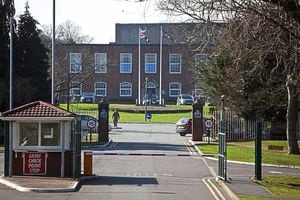
Clive Barracks opened in 1916 and has been home to 1st Battalion The Royal Irish Regiment since 2007 when the battalion moved from Fort George, Inverness.
The base is one of 10 sites across the country that will be disposed of by the MoD to generate extra money and provide land for up to 7,000 homes. The MoD says the money from the sales will be ploughed back into defence spending.
It said the vast majority of the sites will be sold in time to contribute to the Government's target of 160,000 new homes by 2020 and generate a total of £140 million.



